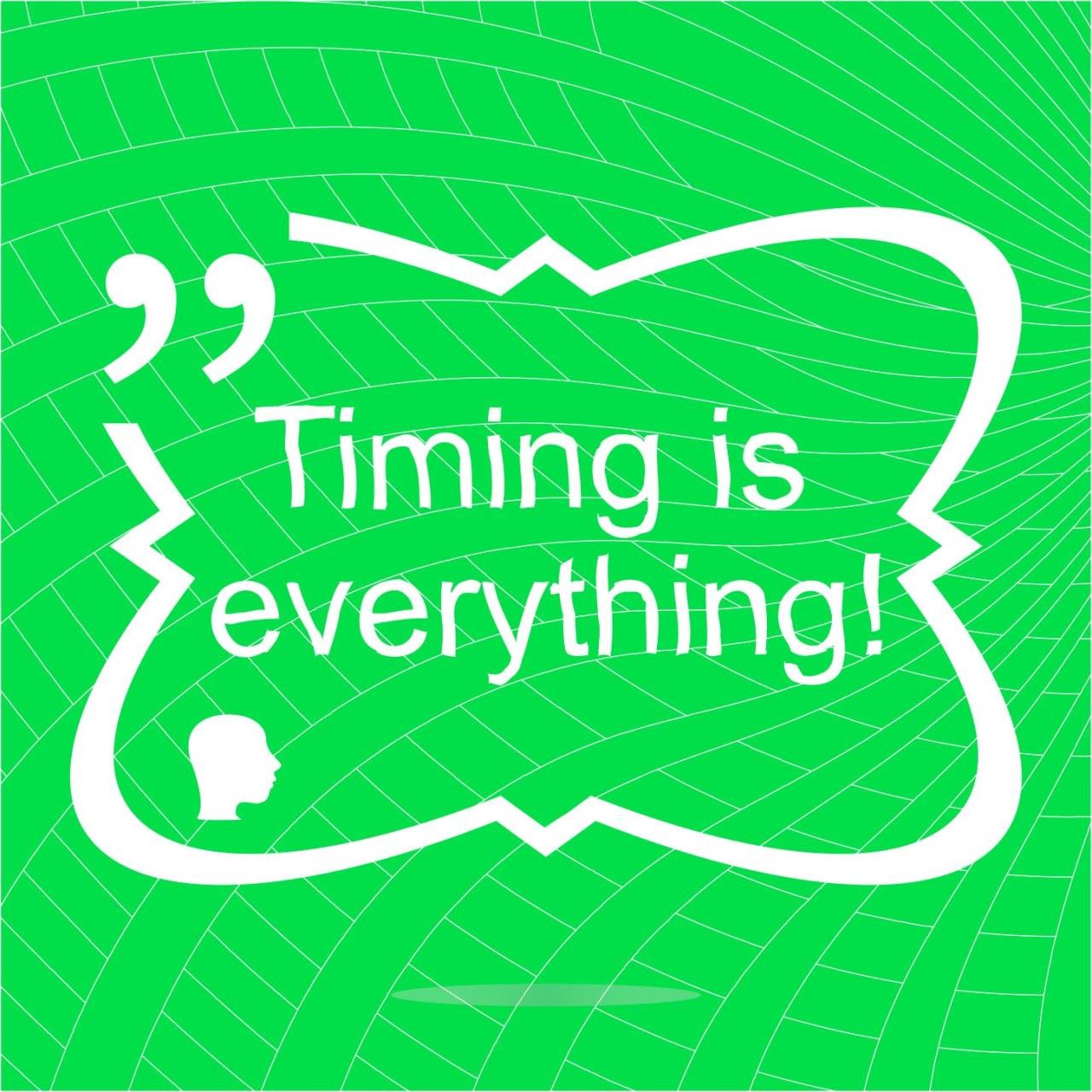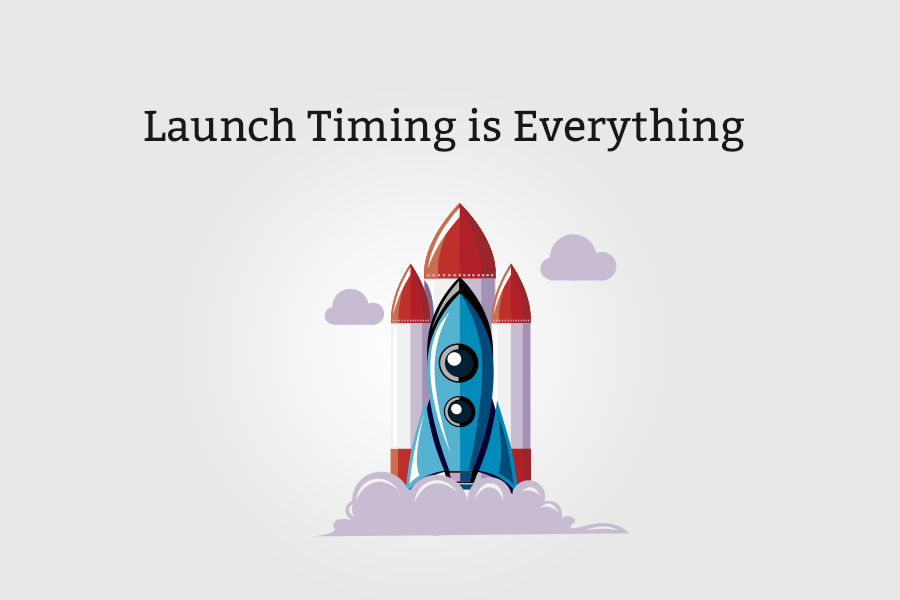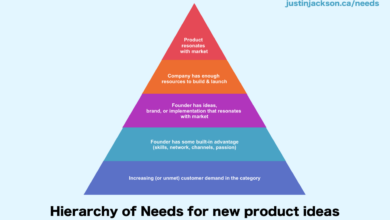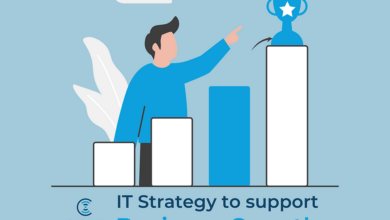
Startup Timing Everything Matters
In the startup world timing is everything – In the startup world, timing is everything. A brilliant idea, meticulously crafted product, and dedicated team can all be rendered useless if launched at the wrong moment. Understanding the crucial role of timing in each stage of a startup’s journey is vital for success. From identifying market trends to anticipating competitor moves and adapting to changing customer needs, the right timing can make or break a startup.
This exploration dives deep into the intricacies of timing in the startup ecosystem, examining its impact on various aspects of a venture’s lifecycle. From idea conception to scaling operations, we’ll analyze how factors like market conditions, resource availability, and technological advancements influence a startup’s success or failure.
Understanding the Concept of Timing in Startups

The startup world is a relentless race against time. Ideas come and go, markets shift, and competitors emerge. A startup’s success often hinges not just on the quality of its product or service, but also on the perfect moment to enter the market and capitalize on prevailing trends. This delicate dance between opportunity and execution, known as timing, is often the difference between a resounding victory and a silent failure.Understanding the importance of timing involves recognizing that market conditions, competitor actions, and investor sentiment all play crucial roles in shaping a startup’s trajectory.
A well-timed launch can propel a company to rapid growth, while a poorly timed entry can lead to significant setbacks or even complete failure. This principle of “timing is everything” is not merely a catchy phrase; it’s a fundamental truth in entrepreneurship.
The Core Meaning of Timing in Entrepreneurship
“Timing is everything” in entrepreneurship means recognizing and capitalizing on favorable market conditions while mitigating potential risks associated with unfavorable circumstances. It’s about understanding the current state of the market, anticipating future trends, and aligning your startup’s launch with the optimal moment. This involves recognizing not only the ideal time to enter a market but also the opportune time to pivot, scale, or even exit.
Successful startups often demonstrate an acute awareness of the market’s pulse, recognizing when a demand for their product or service is strong, when funding opportunities are abundant, or when competitors are vulnerable.
Examples of Startups that Succeeded Due to Favorable Market Timing
Numerous startups have flourished by aligning their launch with positive market trends. Airbnb’s emergence coincided with a surge in the desire for unique travel experiences, catering to a new generation of travelers seeking authentic interactions. Similarly, the rise of e-commerce platforms like Amazon was perfectly timed to capitalize on the increasing accessibility of online shopping. These examples highlight how understanding and responding to market shifts can lead to substantial success.
Examples of Startups that Failed Due to Poor Timing
Conversely, many startups have stumbled and failed because of poor timing. Companies focusing on specific technologies before their widespread adoption often encounter challenges. Some social media platforms that emerged during a period of intense competition and regulatory scrutiny struggled to maintain relevance and market share. This illustrates the crucial importance of analyzing the market landscape and the potential for shifts in consumer preferences or regulatory environments.
Comparison of Timing Impact Across Startup Lifecycle Stages
The impact of timing varies significantly across different stages of a startup’s lifecycle. In the idea generation phase, timing influences the viability of the idea itself. If a particular problem or need isn’t prominent in the market, pursuing it might prove fruitless. In product development, timing impacts the feasibility of building a product that meets evolving customer needs.
A poorly timed launch might leave a product outdated before it reaches the market. Launch timing is critical to capitalizing on market demand and securing early adopters. Finally, scaling a startup depends heavily on the market’s ability to support sustained growth. A startup scaling during a downturn might face significant financial challenges.
| Stage | Positive Timing Factors | Negative Timing Factors | Impact on Startup |
|---|---|---|---|
| Idea Generation | Emerging market needs, unmet demands, favorable regulatory environment | Over-saturated market, diminishing consumer interest, evolving societal values | Viable idea vs. unsustainable concept |
| Product Development | Strong market demand, technological advancements, supportive ecosystem | Rapid technological obsolescence, shifting customer preferences, regulatory hurdles | Relevant product vs. outdated product |
| Launch | High market demand, low competition, favorable investor sentiment | Economic downturns, intense competition, regulatory changes | Rapid growth vs. slow adoption |
| Scaling | Expanding market, increased investor interest, strong customer base | Economic recession, market saturation, changing consumer preferences | Sustained growth vs. plateauing or decline |
Market Analysis and Timing
Understanding market dynamics is crucial for startup success. Timing isn’t just about launching at the right moment; it’s about aligning with the evolving needs and trends of your target market. A thorough analysis of the current market landscape allows startups to identify potential opportunities and mitigate risks, ultimately increasing the likelihood of achieving their goals.Market analysis goes beyond simply identifying trends; it involves a deep dive into consumer behavior, competitor strategies, and broader economic forces.
This detailed understanding provides valuable insights into market readiness, enabling startups to refine their product offerings and launch strategies to maximize their impact.
Key Market Trends and Shifts
Market trends are the directional movements within a specific market, often reflecting shifts in consumer preferences, technological advancements, or economic conditions. Identifying these trends is vital for startups because they can indicate emerging opportunities or potential threats. For example, the rise of e-commerce has created opportunities for online retailers while simultaneously challenging traditional brick-and-mortar businesses. Similarly, the increasing adoption of mobile technology has transformed communication and commerce, presenting new avenues for innovation.
Recognizing these shifts early on allows startups to adapt and position themselves effectively.
Assessing Market Readiness
Assessing market readiness for a new product or service involves evaluating various factors to determine if the market is receptive and prepared to adopt the offering. Key considerations include the existence of a defined target market with a clear need for the product or service, the availability of necessary infrastructure, and the presence of competitive landscape. A thorough analysis of these factors is crucial for startups to accurately gauge the potential for success.
Consider the example of a new software application; if the market lacks the necessary technological infrastructure, the product’s adoption rate will be significantly lower. Therefore, assessing the readiness of the market is vital for strategic planning.
Recognizing Emerging Market Opportunities
Emerging market opportunities are often characterized by unmet needs or evolving trends that present potential for significant growth. These opportunities can arise from technological advancements, shifts in consumer behavior, or emerging global markets. Identifying these opportunities requires staying informed about industry trends, analyzing market data, and proactively engaging with potential customers. For instance, the growing interest in sustainable products has opened new opportunities for businesses focused on eco-friendly solutions.
Methods for Recognizing Emerging Market Opportunities
Thorough market research, including surveys, focus groups, and competitor analysis, is crucial to recognize emerging market opportunities. By understanding customer needs and preferences, businesses can identify unmet demands that can be addressed by their products or services. Monitoring industry news, attending conferences, and actively engaging with potential customers can also provide valuable insights into emerging trends and market shifts.
Furthermore, exploring new markets and international expansion can lead to the discovery of novel opportunities.
The Role of Market Research in Understanding Timing
Market research provides a critical lens through which startups can understand market dynamics, customer preferences, and competitor strategies. This data helps in gauging market readiness and identifying emerging trends. It helps predict future market needs, enabling startups to align their offerings and launch strategies accordingly. For example, a detailed analysis of consumer spending patterns can provide valuable insights into the timing of product launches, maximizing the impact of marketing efforts.
Analyzing Market Trends vs. Predicting Future Market Needs
| Aspect | Market Trend Analysis | Future Market Need Prediction | Key Differences |
|---|---|---|---|
| Focus | Identifying current patterns and directions in the market. | Forecasting future needs and demands based on current trends and potential shifts. | Trend analysis is descriptive; prediction is proactive. |
| Time Horizon | Current and short-term trends. | Medium to long-term future needs. | Trend analysis is immediate, while prediction is forward-looking. |
| Methodology | Data collection and analysis of current market data. | Combining market trend analysis with projections, expert opinions, and scenario planning. | Trend analysis relies on concrete data; prediction involves estimations. |
| Accuracy | High degree of accuracy in describing current market conditions. | Lower degree of accuracy compared to trend analysis due to inherent uncertainty in forecasting. | Trend analysis is grounded in present data; prediction involves estimations. |
Competitive Landscape and Timing
Navigating the startup world is akin to navigating a complex, ever-shifting landscape. Understanding the competitive terrain is crucial, and timing becomes an even more critical factor in carving out a successful path. A startup’s ability to seize the right moment to enter a market or introduce a product significantly impacts its success. This section delves into how the competitive landscape shapes a startup’s strategy and how timing influences its differentiation and positioning.The dynamic nature of different industries significantly affects how a startup must approach the market.
A fast-moving, technology-driven industry, for instance, requires a different approach than a mature, established sector. Understanding these differences is key to formulating a timing strategy. Timing is not just about when you launch, but also about when you pivot, when you expand, and when you scale.
Comparing Competitive Landscapes
Different industries present unique competitive landscapes. The tech industry, characterized by rapid innovation and disruption, often sees a high churn rate of competitors. This necessitates a swift response and adaptation to changing market conditions. Conversely, established sectors, such as healthcare or finance, may present a more stable but potentially slower-paced environment, with entrenched players and established regulations.
The timing of entry and the adoption of innovative solutions in these sectors must account for these differences.
Impact of Timing on Differentiation
Timing significantly influences a startup’s ability to differentiate itself from competitors. Entering a market early can allow a startup to establish a strong brand identity and gain market share before competitors emerge. However, it can also present challenges in securing funding and building a scalable business model before the market is fully developed. Conversely, entering later can allow a startup to learn from the mistakes of early entrants and adapt its strategy to existing market trends.
However, this approach might mean having to overcome existing market leaders and build brand recognition from scratch. The timing must be aligned with the maturity of the market and the startup’s capabilities.
Timing and Strategic Positioning
A startup’s strategic positioning is directly influenced by its timing. A startup entering a market at the right time can position itself to capitalize on emerging trends or address unmet needs. A poorly chosen entry point, however, can lead to being overshadowed by competitors or failing to resonate with the target audience. Successful timing hinges on accurately predicting the trajectory of market demand and competitor actions.
Anticipating Competitor Moves
Anticipating competitor moves is crucial for a startup’s success. By closely monitoring competitor activities, market trends, and industry news, startups can identify potential threats and opportunities. This proactive approach allows for strategic adjustments and positioning to mitigate risks and seize emerging opportunities. It’s not enough to simply react to competitor actions; a successful startup anticipates them.
Impact of Timing on Competitive Strategies
| Strategy | Early Stage Timing | Late Stage Timing | Impact on Competitive Position |
|---|---|---|---|
| First Mover Advantage | Can establish brand dominance, capture significant market share, and set industry standards. | Requires overcoming entrenched players, requires strong brand building, and needs superior product/service. | Early entry can lead to a stronger initial position, but requires significant investment in market education and overcoming initial skepticism. |
| Niche Market Focus | Can find a gap in the market, gain early traction, and build strong customer relationships. | May require identifying a new niche or a specific unmet need, requiring in-depth market research. | Finding a specific niche early may lead to a loyal customer base, but requires meticulous market research. |
| Disruptive Innovation | Can challenge established norms and disrupt existing markets, but requires overcoming entrenched interests. | Requires adapting to existing market realities, offering superior value propositions and overcoming established customer loyalty. | Early disruptive innovation can create a seismic shift, but late-stage adoption requires meticulous planning and adaptation. |
| Follower Strategy | Requires deep market research, and careful adaptation to avoid market saturation. | Allows learning from early mistakes and building upon existing foundations, but requires a compelling value proposition. | A well-executed follower strategy can avoid costly mistakes and capitalize on existing market structures, but requires unique value proposition to stand out. |
Resource Availability and Timing
The success of a startup hinges not only on a compelling idea but also on the timely acquisition of crucial resources. Understanding the availability and cost of these resources, whether funding, talent, or technology, is critical for navigating the often-unpredictable landscape of early-stage development. A startup that secures the right resources at the opportune moment is far more likely to thrive.Effective resource management is paramount in the dynamic startup environment.
The ability to identify and capitalize on favorable resource availability directly correlates with a startup’s chances of achieving its goals. This involves more than just having the right tools; it’s about securing them at the right time to optimize their impact.
Crucial Resources for Startups
Startups require a complex interplay of resources to succeed. These resources, often interconnected, include financial backing, skilled personnel, and the right technology. The right funding can fuel growth, the right talent can drive innovation, and the right technology can create a competitive edge. The availability of these resources directly impacts a startup’s trajectory.
Funding Availability and Timing
Securing funding is often a primary concern for startups. The timing of funding availability can significantly influence a startup’s trajectory. Access to funding sources is not uniform; it changes based on market conditions, investor sentiment, and overall economic trends. Startups need to be adaptable and agile, adjusting their strategies to align with the current funding landscape.
Impact of Timing on Resource Costs
The cost of resources, particularly talent and technology, fluctuates based on market demand and supply. Timing significantly impacts these costs. For instance, hiring top talent during a period of high demand will likely result in higher salaries and potential difficulties in recruitment. Likewise, acquiring specific technologies at the right time can often lead to better pricing and negotiation opportunities.
Examples of Startups Capitalizing on Resource Availability
Numerous startups have benefited from strategically aligning their needs with favorable resource availability. One example is a company focused on sustainable energy solutions. Capitalizing on a surge in government funding for green technologies, the company successfully secured venture capital and attracted highly skilled engineers at a more favorable rate.
Correlation Between Timing and Funding Sources
| Time Period | Funding Source | Availability | Impact on Startup |
|---|---|---|---|
| 2020-2021 | Government Grants (Green Tech) | High | Attracted investors, lowered funding costs |
| 2022-2023 | Venture Capital (AI) | Moderate | Increased competition, higher valuations |
| 2024-Present | Private Equity (SaaS) | Low | Increased focus on profitability and scalability |
Customer Needs and Timing
The startup world is a dynamic ecosystem, constantly shaped by evolving customer needs. Understanding these needs and recognizing the optimal time to enter a market or launch a product is critical for success. Timing, in this context, is not just about the market’s readiness but also the alignment between your offering and the current desires of your target audience.Adapting to changing customer demands is a key factor in sustained growth and success.
A company that fails to recognize and respond to shifts in customer preferences risks becoming irrelevant. Identifying the right customer segment and anticipating future trends are vital components in crafting a successful startup strategy.
Impact of Changing Customer Needs on Startup Timing
Customer needs are not static. Technological advancements, social trends, and economic shifts all contribute to evolving desires and preferences. Startups must be attuned to these changes and adapt their strategies accordingly. Understanding the nuances of changing customer needs is critical for successful market entry and product development.
Significance of Identifying the Right Customer Segment
Pinpointing the ideal customer segment is crucial for effective product development and marketing efforts. This involves in-depth market research and analysis to identify a specific group of consumers with shared needs and characteristics. By focusing on a well-defined segment, startups can tailor their products and services to precisely address their requirements, leading to greater customer satisfaction and increased chances of success.
Impact of Timing on Product and Service Development
Timing profoundly influences the development of products and services. A product launched at the wrong moment may fail to resonate with the target audience or face stiff competition. Conversely, a product released at the optimal time can capitalize on existing demand and generate significant market traction. This involves meticulous market analysis to gauge the readiness of the market for a specific product or service.
Examples of Startups Adapting to Changing Needs
Numerous startups have successfully adapted to changing customer needs. For instance, the rise of mobile commerce prompted many e-commerce companies to revamp their platforms and services to accommodate the mobile-first consumer. Another example is the rapid growth of subscription services, which emerged in response to the evolving preferences of consumers seeking convenience and curated experiences. These examples showcase the importance of responsiveness to evolving market demands.
Adapting Product Development Strategies to Changing Demand Trends
Product development strategies must be adaptable to keep pace with changing customer demands. This includes continuous market research and analysis to identify emerging trends and shifts in customer preferences. Regular feedback loops with customers are essential to understanding their needs and refining product offerings accordingly. This iterative approach to development allows startups to quickly adapt to changing customer needs and maintain a competitive edge.
In the startup world, timing is absolutely crucial. Launching a product at the right moment can make or break it. It’s a bit like the “Hello world!” moment – that first, crucial step in software development, often the very first line of code. A successful startup needs that crucial first step, and Hello world! often signifies a significant milestone.
Ultimately, nailing the timing of your startup’s introduction is key to its future success.
For example, a fitness app that initially focused on individual workouts may need to adapt to changing trends by offering group classes or virtual training sessions.
Technological Advancements and Timing: In The Startup World Timing Is Everything

The startup landscape is constantly evolving, driven by rapid technological advancements. Understanding how these breakthroughs impact market timing is crucial for success. A startup that fails to recognize emerging technologies or misjudges their adoption rate risks falling behind competitors. Conversely, a startup that correctly anticipates and capitalizes on these advancements can gain a significant competitive edge. This section explores the complex relationship between technological advancements and the timing of a startup’s launch and operations.Technological breakthroughs often create entirely new markets or dramatically reshape existing ones.
Recognizing these emerging technologies early and aligning your startup’s offering with their potential impact is paramount. This requires continuous monitoring of research and development trends, industry conferences, and expert opinions. Timing, therefore, isn’t just about market readiness; it’s about recognizing the right technological wave to ride.
Impact of Technological Advancements on Startup Timing
Technological advancements can significantly influence startup timing by creating both opportunities and challenges. These breakthroughs can disrupt existing business models, opening new avenues for innovation and creating new market needs. Conversely, they can also necessitate significant investments in research and development or pose challenges in integrating new technologies into existing infrastructure.
Examples of Startups Capitalizing on Technological Advancements
Many successful startups have leveraged technological advancements to achieve rapid growth and market dominance. For instance, companies like Airbnb capitalized on the rise of the sharing economy and the increasing popularity of online travel platforms. Similarly, companies like Uber utilized advancements in mobile technology and GPS systems to revolutionize the transportation industry. These examples demonstrate how recognizing and adapting to new technologies can lead to significant market impact.
Importance of Recognizing Emerging Technologies
Identifying and understanding emerging technologies is crucial for startups to identify potential opportunities and avoid being left behind. Early recognition of trends allows for proactive development and positioning within the market. Companies like Tesla, recognizing the potential of electric vehicles and battery technology, made strategic investments and positioned themselves for future market leadership.
Timing and Technology Adoption
The adoption of new technologies is often a gradual process, influenced by factors like consumer awareness, infrastructure development, and regulatory frameworks. Startups must carefully assess the timing of their entry into a market with emerging technologies. This involves understanding the current level of adoption, potential challenges, and the anticipated trajectory of future growth. A thorough analysis of these factors helps predict the optimal moment to launch a product or service.
Impact on a Startup’s Ability to Leverage New Technologies
A startup’s ability to leverage new technologies effectively is heavily dependent on its timing. Early adoption can offer significant advantages, including the opportunity to establish a strong brand identity and build a loyal customer base before competitors enter the market. However, early adoption also carries risks, such as needing to adapt to changing technology standards and potential market uncertainty.
Startups must carefully consider these factors and align their timing strategy with the maturity level of the technology and the market’s readiness for adoption.
External Factors and Timing

Navigating the startup landscape isn’t just about internal strategies; external forces play a pivotal role in determining success or failure. Understanding these external factors, from shifting economic tides to evolving social norms, is crucial for a startup’s ability to adapt and thrive. Timing, therefore, isn’t simply about market trends; it’s about understanding and responding to a dynamic interplay of external pressures.Analyzing the impact of external forces requires a proactive approach.
It’s not enough to passively observe; startups must actively monitor and interpret these influences. This requires continuous market research, staying informed about regulatory changes, and a keen awareness of cultural shifts. The ability to anticipate and react to these external factors can be the difference between seizing opportunities and missing the mark.
Economic Conditions and Timing
Economic downturns or booms can significantly impact a startup’s trajectory. During economic slumps, venture capital funding might dry up, consumer spending decreases, and market demand contracts. Conversely, a robust economy can fuel innovation and provide ample opportunities. Startups need to carefully evaluate the current economic climate and adapt their strategies accordingly. For example, a company focused on luxury goods might experience decreased demand during a recession and must shift its focus to more budget-friendly options.
Regulatory Changes and Timing, In the startup world timing is everything
Regulatory environments constantly evolve, impacting how startups operate and innovate. New laws and regulations can either create opportunities or impose constraints. A startup operating in a heavily regulated industry must anticipate changes and adjust its operations accordingly. This involves staying informed about pending legislation and proactively adapting to new requirements. For example, the rise of data privacy regulations has forced many tech startups to overhaul their data handling procedures.
Social Trends and Timing
Social trends, encompassing cultural shifts, evolving consumer preferences, and emerging social issues, also shape the startup landscape. Startups must understand and respond to these changes to remain relevant and appealing. A startup focusing on sustainable products might thrive as environmental concerns grow, while a company catering to outdated trends could face challenges. For example, the increasing demand for ethical and sustainable products has led to the rise of numerous eco-conscious startups.
Analyzing the Impact of External Factors
Analyzing the impact of external factors requires a multi-faceted approach. It involves conducting thorough market research to identify trends and anticipate future changes. Regularly reviewing industry reports, news articles, and social media conversations can provide valuable insights. Furthermore, engaging with potential customers and understanding their needs and expectations is essential. Startups should be flexible and adaptable, constantly assessing the external environment and adjusting their strategies accordingly.
Adapting to External Factors
Adaptability is key to success in the startup world. Startups that can adapt to changing circumstances are more likely to thrive. This involves being flexible in their business models, operations, and product offerings. For example, a company selling physical products may need to pivot to e-commerce solutions if demand shifts online. Embracing change and innovation is crucial for long-term sustainability.
Examples of Startups Adapting to External Factors
Numerous startups have demonstrated the importance of adapting to external factors. Companies like Warby Parker, for example, successfully leveraged the growing popularity of online shopping and subscription services. Another example is Etsy, which capitalized on the rise of online marketplaces and handmade goods. These companies understood the trends and adapted their strategies to meet evolving customer needs and preferences.
Table: Timing Influence on Political and Social Shifts
| Factor | Time Period | Response Strategy | Outcome |
|---|---|---|---|
| Increased environmental regulations | 2020-present | Developing sustainable product lines and processes | Increased market share and brand loyalty among environmentally conscious consumers. |
| Rise of remote work | 2020-present | Developing tools and services for remote work and communication | Strong growth and market share for remote work platforms. |
| Growing concern for data privacy | 2018-present | Implementing robust data security measures and transparent data policies | Improved brand trust and customer confidence, as well as compliance with new regulations. |
| Political instability | 2022-present | Diversifying supply chains and exploring alternative markets | Reduced vulnerability to geopolitical events and increased resilience. |
Conclusion
Ultimately, navigating the startup landscape requires a keen understanding of timing. Success hinges on recognizing opportunities, adapting to challenges, and seizing the right moment. By meticulously analyzing market trends, anticipating competitive actions, and remaining agile, startups can significantly increase their chances of thriving. Remember, in the startup world, timing is everything.






